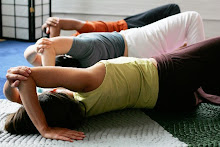
My son was a big Lego fan as a kid, and he probably still is. At every birthday, Christmas, or other special occasion, all he wanted was Legos. I still understand why: building is fun, and building with Legos is REALLY fun. Pieces large and small can all fit together in myriad ways, limited only by your imagination.
Several years ago, I visited the Mall of America outside of Minneapolis. One of the features was a huge Lego City, with skyscrapers at least 10 feet tall, houses, cars, and an airplane overhead-- all made of the little Lego blocks. All the passers-by were stunned at the sight, as was I. My unspoken thoughts: "I'm so glad my kid doesn't have enough Legos to build this at home!"
I was delighted this week to find another demonstration of Lego creativity and whimsy. OK, silliness. Someone has paid homage to the world's most recognizable artistic masterpieces, recreating them in Legos. My favorites are the Warhol send-up and the Magritte, but you may prefer the Mona Lisa or The Last Supper -- in Legos, mind you. Click here to see them all.
To build with Legos, you have to start out with some idea of what you want to build, either from the picture on the box, or in your own imagination. Indeed, anything that shows up in the material realm, from a Lego creation, to a spacecraft, or a musical composition, has to begin as an idea. With Legos, you frequently assemble smaller sections and then fit them together into the larger whole. Kids begin to learn this process of problem-solving through building. Most people don't realize that movement -- any movement of your body in space -- is also determined by the ideas you have. In the language of Moshe Feldenkrais, "We act in accordance with our self-image."
Feldenkrais classes and lessons are fundamentally different from exercise, therapy, or treatment protocols that you may be familiar with. Moshe Feldenkrais said, "What I'm after isn't flexible bodies but flexible brains. What I'm after is to restore each person to their human dignity." Feldenkrais lessons shape your ideas about movement as you experiment with actual movements. Ideas can be limited, or limiting. You might not have enough Legos, or too much of a shape or size block that won't let you build what you want, the way you want to build it. By introducing non-habitual movement patterns, your brain makes new connections -- and movement becomes easier, more comfortable, more capable. You begin to see yourself in new ways. You build on what you know, and what you have. Something new emerges, sometimes as a surprise!
Work in the Feldenkrais Method can ease pain, improve function and performance, restore lost capacity, and reveal new possibilities, in movement and beyond. Profound changes concurrently take place in your thinking, in the way you view yourself, and the way you make contact with the world around you. Your potential is virtually limitless. Even better than Legos.



No comments:
Post a Comment